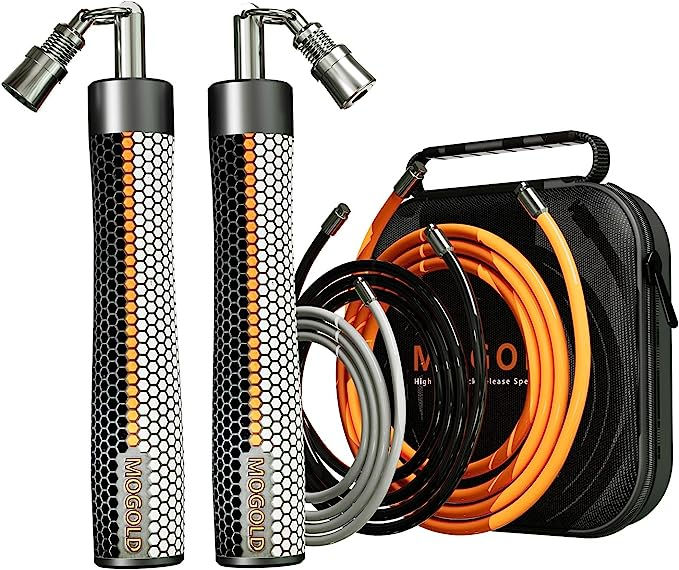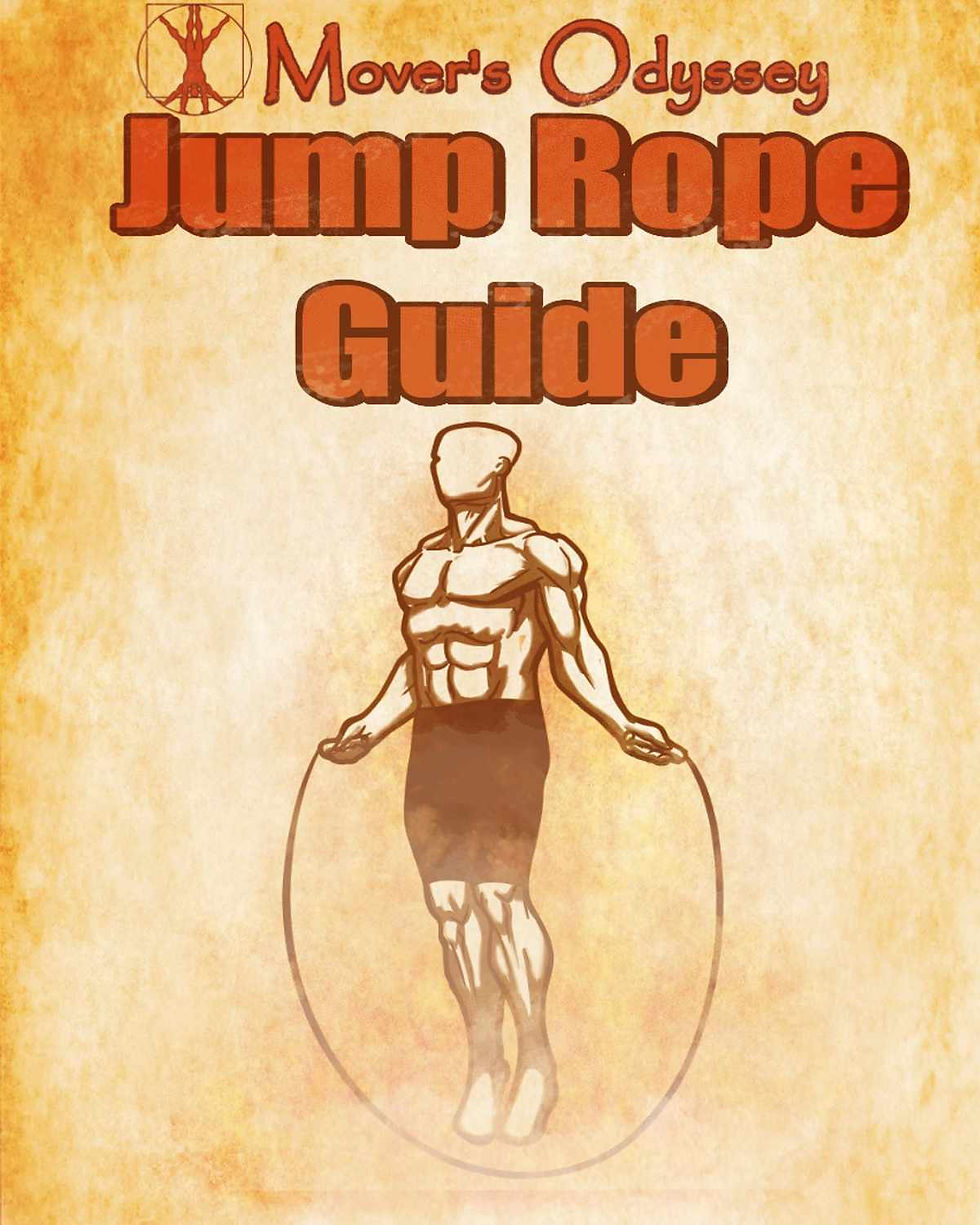
Jumping rope isn't just a fun game your kids play at recess, it's also one of the greatest conditioning workouts you're likely to ever encounter. In fact, 15 minutes of jump rope can burn over 300 calories, more than double what the same time spent running would accomplish. And that's just the tip of the iceberg, check out these other benefits below:
Jump Rope Benefits
Bone Density- The steady low level impact of jump rope increases bone density, making fractures less likely and combating the effects of osteoporosis.
Lymphatic Drainage- The up and down jumping of jump rope open up lymphatic valves and helps move lymph and drain the lymphatic system. This improves the functioning of the immune system and makes one less susceptible to illness and infection.
Agility- Jump rope has been utilized by boxers for over a century due to it's ability to increase speed, agility and quickness. The repetitive low level plyometric forces of jump rope strengthen the tendons of the ankles and create a considerable amount of rebound in the lower body.
Proprioception- In order to perform jump rope the brain must coordinate the upper and lower body together, creating an in-sync rhythm which boosts mind-body connection and increases one's control over the muscles.
Conditioning- Jump rope is capable of sending the heart rate soaring, helping the cardiovascular and muscular systems build a great deal of stamina. While jump rope can be done at a slow steady pace it's most often used in a HIIT style of workout, with bouts of high intensity followed by bouts of low intensity or rest, a time-tested way to build endurance in demanding sports such as MMA and boxing.
Fun- There's a reason kids love jump rope, it's a lot of fun. A few minutes of jump rope is enough to send endorphin levels in the brain soaring and a great excuse for your inner child to come out and play.
What is needed to start Jump Roping?
So you've decided to start jump roping but don't know what you need to get started. Luckily this is an easy activity to get started in, at the most basic level all you need is a jump rope and a clear space that you can jump rope in. However, we live in the modern era and there are a ton of jump ropes available for purchase and a number of accessories to make the process easier. So to make it simple there is a checklist below of what's needed and how to choose the right equipment for you.
Open space- This is a must, without open space there is nowhere to swing the long rope involved in this workout. The recommended space needed is at least 3 feet taller than yourself and about 10 feet long and 5 feet wide. Though this is the minimum and it's always nicer to have more space to move around in while your jumping.
Jumping Surface- A lot of people don't consider the surface they jump on but it's extremely important. Obviously, you want a flat surface so that the rope and your feet don't get tripped up by anything, but you also want to consider the amount of rebound and impact that the surface creates. Something too hard, like concrete is going to quickly wear down the joints with impact and cause overuse injury. Yet something to soft can stifle the ability to jump by absorbing too much of the impact and not allowing rebound. An ideal surface would be wood, a thin rubber mat or even freshly cut grass.
There are specially made mats for jump rope if you don't have a suitable surface available. They are also nice if you're traveling and still want to work out, as you can place these mats anywhere.
Footwear- The shoes you wear can make a big difference in your jumping experience. Large, thick soled shoes are heavier, feel clunky and adsorb too much of the foots ability to rebound. You'll get a better workout and performance if you use minimalist shoes with thin soles. I usually wear my retro, thin -soled Puma's or my old pair of wrestling shoes. However, be aware that if you're not used to these types of shoes you will need to break into them slowly. If this is you, start jump roping with your normal sneakers and only add the minimalist shoes in for a few minutes at a time until your arches can build up strength.
The Jump Rope- And finally we come to the jump Rope. There are many types of jump ropes and they vary considerably in effect and cost. Below is a list of jump rope types and some links to quality brands. But first you need to know what length rope to get.
Most jump ropes are adjustable which is good because as you advance and get better you will likely need to shorten your jump rope. This is because the clearance you need between your feet and the ground to get he rope through will diminish as your technique becomes refined.
In the beginning you will want to be able to step on the rope with one foot and have either side of the rope come up to your shoulders. Eventually you will want to shorten it to your armpits, then chest and finally the ribs. But this means you will want to start with enough length in the beginning.
In general, the following guidelines hold true.....
If you are over 5' get a 9' rope.
If you're over 5'10” get a 10' rope.
If your over 6'4” get an 11' rope.
Types of Jump Ropes
Speed Rope- This might be the most popular jump rope available. As the name suggests these ropes allow for high speed due to a swivel at the end of the handle and a lightweight rope. This is great for a high intensity work out and doing tricks. However, it's not always the best for beginners because it moves faster than they are capable of handling. But overall, these are great ropes and in fact it's one of only two types of ropes I still use.
Beaded Jump Ropes- The same ropes you likely experienced at recess in grade school, these ropes are actually really great for a lot of reasons. These ropes flow smoothly and have a little more weight than speed ropes, meaning the rope slows down a bit. This makes the speed of these ropes much more conducive to beginners. Also the beads make a sound when impacting the ground which helps beginners pick up the rhythm. These ropes will give anyone a great workout, but I really recommend them when first starting out.
Cordless Jump Ropes- These ropes are great if you don't have the space to use a normal jump rope. I often use these in doors during the coldest winter months. You can still get a great workout with these ropes, but you won't get the proprioceptive benefits of a full rope.
Licorice Jump Ropes- These are probably the most common jump rope I see in fitness stores and box stores. The licorice rope feels rubbery and has some weight to it, giving it a good feel for beginners. These ropes are good generic ropes but they come with one major problem, if your using them on a rough surface these ropes will wear out fast and eventually snap. I went through about four of these ropes in a year before I decided to stop using them. But they do function good otherwise and are cheap ropes if your just starting out.
Leather Jump Ropes- This a throwback from the past, the classic jump rope used by wrestlers and boxers for over a century. They are durable ropes with a good feel and a classic look, however they have definitely been out paced by many modern ropes. They aren't as fast as speed ropes, or as cheap as licorice ropes, and while they have a good feel it's not as good as many beaded ropes. But man do they look rustic and authentic hanging from a home gym wall.
Weighted Jump ropes- This is the other type of jump rope I still use, though I use this on days I'm not strength training because this does wear down the muscles to a greater degree. There are two types of weighted jump ropes, those with the weight in the handle and those with the weight in the rope. When the weight is in the handle the extra strain is put on the grip, the forearms, the biceps and the lateral shoulders. When the weight is in the rope the stress on the body becomes controlling the centrifugal force of the rope, which tends to work the shoulders, chest and upper back. I personally like the weight in the rope, but this is just dependent on your intention and personal preference.
Starting to workout
In the beginning phases it is most important to learn the skill of jump rope while giving the body time to recover and adapt to the movement. I recommend starting with a set number of jumps done 2-3 days a week. A good number to start with is 200 jumps a day, 2-3 days a week for the first week. On the second week if your feeling fine move the jumps up to 300 and then 400 by the third week and 500 by the fourth week.
At this point I would begin setting a timer instead of counting jumps. Anywhere between 10-20 minutes is a great workout and gives you plenty of time to work on improving skill, improving speed, or adding new techniques and tricks to keep it interesting.
Also consider trying interval training, such as the classic boxers workout of 3, 3 minute rounds with a 1 minute break between each. Then loosen up a bit, take a sip of water and to 3 more rounds. Repeat this until you reach anywhere between 9 and 15 rounds and do this 2-3 days a week.
Slow, steady state jump rope for 5-10 minutes also makes a great full body warm-up for strength training or athletic training. Whatever form of training you choose just keep it consistent and continue learning new skills over time, it really becomes fun once your skill level reaches a certain point, becoming more like a dance than a workout.
I hope this article has helped and I wish you luck on your jump roping journey. If you would like further instruction, consider trying out the Mover's Odyssey Jump Rope Guide:










I keep coming back to this post. Thank you, Mover's Odyssey team.
I needed this. perfect timing